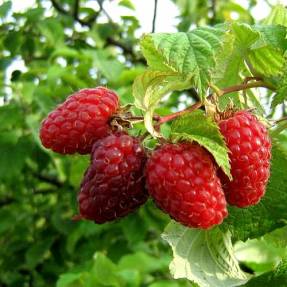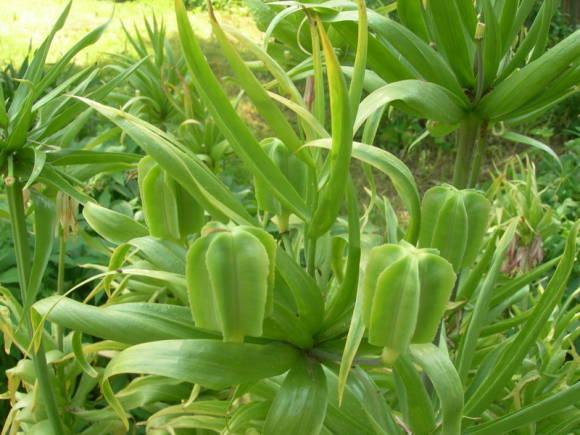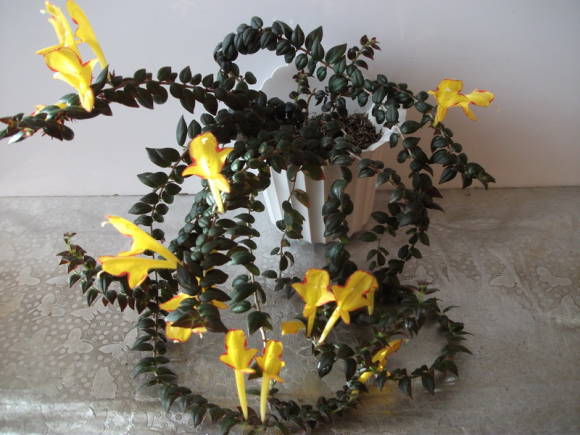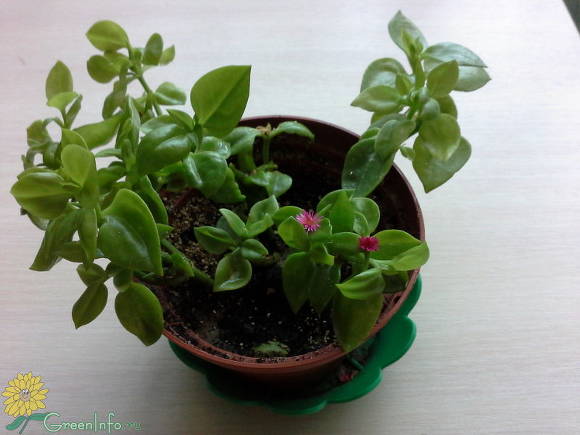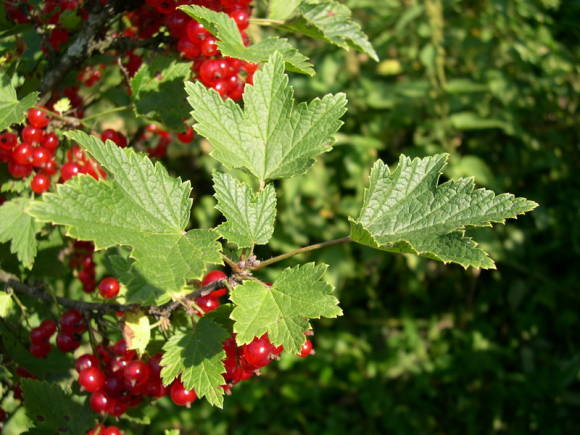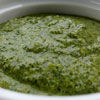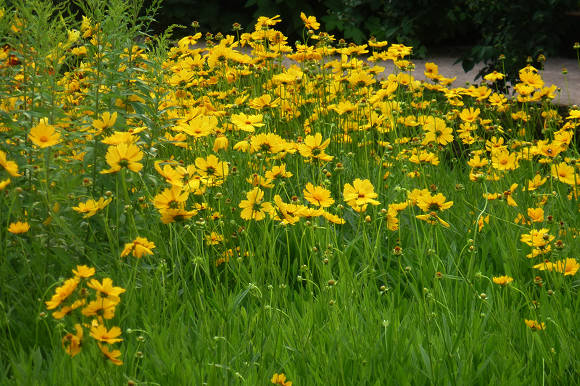
Perennial coreopsis (see Coreopsis) are one of the most unpretentious plants. They decorate the garden in late summer - early autumn, when there are not so many flowers in the garden. They bloom for a long time, up to 80 days. They are drought-resistant and frost-resistant, hibernate without shelter.
Growing conditions... Coreopsis requires a well-lit area. Coreopsis whorled and coreopsis pink withstand some shading in the middle of the day.

The soil... For all coreopsis, it is important that the soil is fertile, slightly moist, light and drained, slightly acidic in acidity (pH 5.5-6.5). On heavy, dense soils, and even more so with stagnant moisture, plants fall out in winter, despite the temperature winter hardiness.
There are nuances for certain species. So, for large-flowered coreopsis, moderately fertile, dry soil is required. Coreopsis pink also does not like overly fertilized soils, on which it loses its compactness and blooms worse.
 |  |
Watering... Coreopsis are drought-resistant plants; in their native American expanses, they even grow along roads. But during dry periods, plants need to be watered. The most demanding of moisture is large-flowered coreopsis.
Young plants need regular watering to fully form the root system. Later, the plants become more drought tolerant, they can be watered once a week. In this case, it is necessary to ensure that the soil remains moist to a depth of at least 2-2.5 cm.
Top dressing... Coreopsis are fed with a complex mineral fertilizer for flowering plants once a month. They respond to lush greens for feeding, but may produce fewer flowers. Therefore, this rule is true only in the first year of plant life. From the second year, it is enough to simply add compost in the spring.
Pruning... After the first wave of flowering (at the end of July - beginning of August), the faded inflorescences are cut off and fertilized. In this case, by the end of summer, coreopsis blooms again profusely. The exception is large-flowered coreopsis, for which such pruning can result in a decrease in winter hardiness and the death of a plant in winter. Pruning for it can be done, but not immediately after flowering. Before winter, the plants are completely cut off.
Pests and diseases... Of the pests, only slugs and snails are interested in coreopsis. And the prevention of possible fungal diseases is planting in an open, sunny place, good ventilation and morning watering, after which the leaves quickly dry out during the day.

Reproduction
Perennial coreopsis are propagated by seeds and dividing the bush.
The seeds can be sown outdoors or for seedlings. Sowing into the ground is carried out at the end of April (preferably in a greenhouse), or before winter. In the future, the plants can self-sow, but the characteristics of the variety are not always preserved.
When grown through seedlings, the seeds are only slightly sprinkled with a substrate, germinated at a temperature of + 18 ... + 24 degrees in the light. Seedlings appear in 2-3 weeks. After the appearance of the first true leaves, the moisture content of the substrate is reduced, but they do not allow it to dry out, the temperature is reduced to + 15 ... + 21 degrees. Dive in 3 pieces. in pots with a diameter of 10 cm.
Seedlings in open ground are planted at a distance of 20-30 cm. Plants grow well due to rhizomes, forming clumps. They usually bloom in the second year. However, varieties of large-flowered coreopsis that bloom in the year of sowing have been bred: semi-double Early Sunrise, terry Sunray, simple Heliot.
 |  |
The division of adult plants is carried out in early autumn or spring. It should be borne in mind that coreopsis are short-lived perennials, they should be divided or renewed from seeds every 3-4 years. It is better not to leave Coreopsis large-flowered for more than 3 years. The only exception is the more durable whorled coreopsis, it can grow without dividing up to 6 years.
A sure signal for the need for division is a decrease in flowering intensity.
There is one more way of reproduction - by basal cuttings, i.e. separation of daughter sockets.In practice, this method is rarely used, but it can be used to multiply valuable varieties.
Auricular coreopsis forms stolons and is easily propagated by daughter rosettes.
Coreopsis in garden design
All coreopsis are extremely graceful. Baskets are medium-sized, floating on thin, flexible peduncles that can intertwine with each other or lean on neighboring plants. The tongues of flowers are bright, silky, glossy, most often of yellow shades, as if painted by the sun itself. The foliage of many species is delicate, light, creating an ideal background for flowers. They feel the naturalness and pretty attractiveness of meadow plants.

There are many ways to use coreopsis in the landscape. They look beautiful in groups on the lawn, in the lining of bushes, in the curbs along the paths and fences, in mixed flower beds. They successfully replenish the assortment of plants blooming in late summer - early autumn.
But these are plants not only for flower gardens. For example, verticulata coreopsis is especially suitable for planting in gravel gardens and goes well with feather grass and other grasses, as well as with the Caucasian poppy blooming at the end of summer, silvery plants - mullein, purse, and seaside cineraria. Yellow varieties are good to combine with blue catnip, blue and purple sage, veronica, delphinium. It is a recognized container plant.

Large-flowered coreopsis is a larger plant that will not get lost even among the brightest crocosmias, cannes, dahlias, red heleniums of the Moerheim Beauty or Rubinzwerg varieties. Low-growing varieties, for example, Zagreb with fern-like foliage and golden baskets, are also used for flowerpots and container compositions. Planting in containers is well tolerated by plants even in a flowering state, with a clod of earth.
Coreopsis large-flowered is distillable. For this, the container plants are hibernated at a temperature of + 3 ... + 5 degrees. Or left in the open air with a non-woven fabric cover. At the end of winter, the plants are placed in a warm, light room with a temperature of + 15 ... + 18 degrees. After 6-7 weeks, the plants will bloom. Distillation is also possible at lower temperatures, equal to + 10 ... + 15 degrees, but the period of distillation is lengthened.
Not everyone knows that corepses are excellent plants for country bouquets. The cut stays in water for more than a week. Terry varieties of large-flowered coreopsis are especially effective in vases.
